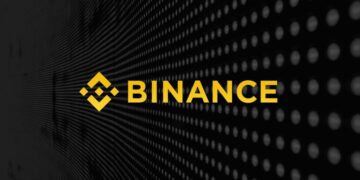Cryptocurrencies are well-known for being risky property, which signifies that skilled merchants have loads of alternatives within the house. Buyers can count on to be taken on a wild trip in the event that they plan on holding for a very long time.
Stablecoins, a category of cryptocurrencies that provides buyers worth stability pegged to the worth of fiat currencies, supply buyers a protected haven when market turbulence hits however might symbolize missed alternatives over time.
Chatting with Cointelegraph, a number of consultants have said that retail buyers ought to method cryptocurrencies with a “pay your self first” perspective and that an allocation of as much as 5% in crypto needs to be comparatively “protected” whereas permitting for “marginal return.”
Stablecoins are fully totally different: No “marginal return” could be anticipated from merely holding an asset tied to the worth of the US greenback, though yields can attain double-digit annual share charges (APRs) utilizing decentralized finance (DeFi) protocols. These protocols, nevertheless, result in increased threat.
Completely different stablecoins, totally different dangers
Not all stablecoins are created equal. The biggest stablecoins available on the market — USD Coin (USDC), Tether (USDT) and Binance USD (BUSD) — are backed 1:1 by money or property with related worth by centralized firms. Because of this for each token in circulation, there’s a greenback in money, money equivalents or bonds in custody.
For instance, different stablecoins like Dai (DAI) and TerraUSD (UST) depend on totally different mechanisms. DAI is crypto-collateralized and ensures it will probably preserve its peg by being overcollateralized. It contains financial mechanisms that incentivize provide and demand to drive its worth to $1.
UST, however, is a non-collateralized algorithmic stablecoin. An underlying asset doesn’t again it, as it really works by algorithmic enlargement and provide contraction to take care of its peg. Terra, the blockchain behind UST, has notably been increase reserves for the stablecoin. Thus far, it has already bought almost 40,000 BTC value over $1.6 billion and over $200 million in Avalanche (AVAX).
Marissa Kim, basic accomplice at Abra Capital Administration — the asset administration arm of crypto funding agency Abra — advised Cointelegraph that the agency views “USDC and different U.S.-regulated stablecoins as protected as protecting reserves in a checking account,” as these are “required to show frequently that they’re absolutely collateralized.”
To Kim, decentralized stablecoins like DAI and UST might “pose different dangers,” as risky markets may see DAI lose its peg to USD. She added its governance “is by the MakerDAO group, and no person is aware of who holds and governs this protocol and the place voting energy could also be concentrated.”
Chatting with Cointelegraph, Adam O’Neill, chief advertising officer at cryptocurrency buying and selling platform Bitrue, mentioned that the “function of USDC and USDT” within the cryptocurrency house is “synonymous to the function of the U.S. greenback within the conventional monetary ecosystem.”
O’Neill added that buyers ought to use stablecoins “as a go-to hedge when buying and selling and storing their property.” He added:
“The safety outlook of stablecoin shouldn’t be in contrast, as each the centralized and decentralized variations are safe in themselves. Nevertheless, it isn’t unusual to seek out hackers exploit the frailty in protocols constructed to supply merchandise bothering each lessons of stablecoin tokens.”
To O’Neill, how a lot buyers ought to allocate to stablecoins is a call that’s as much as them and will depend on their funding objectives. Kent Barton, tokenomics lead at ShapeShift DAO, advised Cointelegraph that whereas each stablecoin has its personal threat profile, there are some things buyers ought to consider.
For one, centralized stablecoins like USDC and USDT could be simply transformed again into USD, however the entities behind these cash may “probably blacklist sure addresses, as an illustration, in response to calls for from authorized entities.” Barton added that whereas there are long-standing considerations concerning USDT’s backing, it has maintained its peg to this point:
“USDT has the benefit of being time-tested: It’s the stablecoin that’s been across the longest. It has deep liquidity throughout centralized exchanges and plenty of DeFi platforms.”
Decentralized stablecoins like DAI and USDT, Barton mentioned, are extra clear due to the character of the blockchains they’re constructed on. Nonetheless, there are different dangers on the market, together with risky markets threatening DAI’s over-collateralization.
To Olexandr Lutskevych, founder and CEO of crypto alternate CEX.io, the safety of every stablecoin will depend on how safety is outlined. When it comes to code, technical audits ought to cowl the dangers of extra vulnerable stablecoins, whereas by way of reliability of shifting funds from A to B, most have been recognized to suit the aim.
As for stablecoins’ means to take care of their peg towards the greenback, Lutskevych mentioned how that peg is maintained needs to be the primary give attention to buyers’ minds.
Stablecoin DeFi yields: Too good to be true?
Whereas merely holding stablecoins ensures cryptocurrency buyers aren’t coping with the market’s volatility, it additionally means they aren’t actually making any sort of return except they put their stablecoins to work.
There are a number of choices on the subject of stablecoins comparable to lending them out on centralized exchanges or blue-chip decentralized finance protocols result in comparatively small yields — typically beneath 5% — which might be comparatively protected. Transferring to riskier protocols, or using complicated methods to spice up yield, may result in increased returns and suggest extra threat.
For instance, it’s attainable to seek out yields above 30% for Waves’ Neutrino USD (USDN) stablecoin, which has not too long ago damaged its peg and fallen beneath $0.80 earlier than beginning to get well.
When requested whether or not buyers ought to lend their stablecoins or add them to decentralized exchanges’ (DEXs’) liquidity swimming pools to earn yield, ShapeShift DAO’s Kent Barton identified that DeFi protocols usher in good contract dangers to the equation, which should be thought-about.

To Barton, protocols which were round for “various months and have a observe report of defending billions of {dollars} in worth are pretty safe.” Nevertheless, there’s “no assure of future safety and stability.” Protocols with increased rewards, he mentioned, are usually riskier.
Lutskevych urged buyers ought to first perceive precisely what they’re placing their cash into:
“Simply because it’s DeFi, the funding ideas don’t change. And, one of many foundational funding ideas is: Earlier than proposing any technique, you need to completely perceive one’s threat preferences and particular person circumstances.”
To Lutskevych, buyers’ capital, time horizon, objectives and threat tolerance must also be weighed when contemplating staying put or shifting stablecoins to earn yield.
To O’Neill, it’s “typically advisable that stablecoins needs to be deployed to harness yields from lending platforms,” though buyers must also “be prepared to leap at any funding alternative.”
Stablecoins, partly because of the DeFi house, supply buyers a plethora of alternatives throughout a large variety of blockchains. Utilizing them outdoors of centralized exchanges might require some particular data, with out which buyers might find yourself dropping their funds by, for instance, sending them to the improper sort of tackle.
Danger tolerance and class
Chatting with Cointelegraph, Carlos Gonzalez Campo, analysis analyst at funding product issuer 21Shares, mentioned that stablecoins present buyers with entry to a “world community of worth switch much like how the web gave rise to a worldwide and open community for data.”
Campos said that February’s Shopper Worth Index (CPI) information in the US revealed a 7.9% year-over-year rise, that means individuals are dropping their buying energy at a fee that hasn’t been seen in 4 a long time.
What buyers do with their stablecoins, the analyst mentioned, will depend on their threat aversion and degree of sophistication because the “person expertise remains to be missing at the moment” in DeFi platforms that allow customers earn passively on their holdings. Campos added:
“The clearest instance is seed phrases, that are impractical and doubtless gained’t obtain mass adoption. That’s the reason leaders within the business comparable to Vitalik Buterin have emphasised the necessity for large adoption of social restoration wallets, which as a substitute of counting on seed phrases, depend on guardians.”
Abra Capital Administration’s Marissa Kim seemingly echoed Campos’ ideas, as she mentioned bugs and different exploits are attainable in DeFi protocols which regularly pay increased yields within the protocol’s native tokens. They’re “typically extremely risky and is probably not very liquid.”
To Marissa, some buyers could also be keen to tackle the added threat, though others might be “extra involved with principal preservation.”
Whichever technique buyers select to make use of, it’s clear that stablecoins are a serious a part of the cryptocurrency ecosystem. Extra risk-averse buyers might discover they solely belief essentially the most clear centralized stablecoins that provide restricted alternatives, whereas extra venturous buyers might desire increased yields and better threat.
Over time, stablecoins’ affect within the cryptocurrency house is barely set to continue to grow, so it’s essential that buyers perceive what they’re coping with and the dangers concerned with the stablecoins they select to HODL and what they select to do with them.
The views and opinions expressed right here don’t essentially mirror the views of Cointelegraph.com. Each funding and buying and selling transfer entails threat, you need to conduct your individual analysis when making a call.












![Why Ethereum [ETH] address outflows may be headed for DeFi](https://cryptonoiz.com/wp-content/uploads/2023/03/AMBCrypto_An_image_of_a_stylized_Ethereum_logo_with_arrows_poin_22f2aeff-c7bb-4c7d-aec7-547a37a35e82-1-1000x600-360x180.jpg)


























![Why Ethereum [ETH] address outflows may be headed for DeFi](https://cryptonoiz.com/wp-content/uploads/2023/03/AMBCrypto_An_image_of_a_stylized_Ethereum_logo_with_arrows_poin_22f2aeff-c7bb-4c7d-aec7-547a37a35e82-1-1000x600-350x250.jpg)


